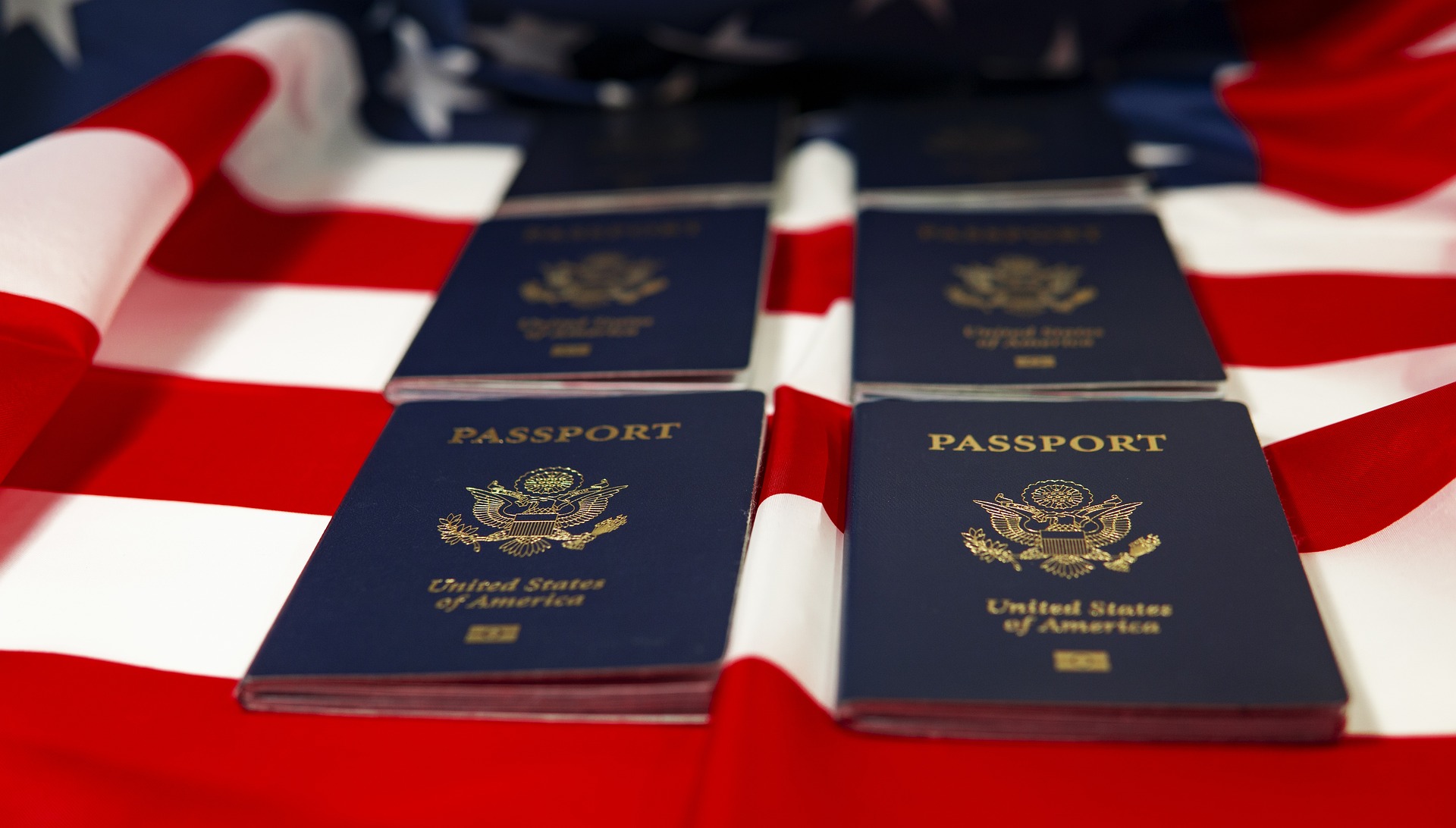Nonimmigrant visa pathways offer IT professionals and STEM employees valuable opportunities to work in the United States for a specified duration. While these visas do not provide immediate lawful permanent residence, many individuals who arrive in the United States on nonimmigrant visas often explore pathways to permanent residency and even U.S. citizenship. In this article, we delve into the intricacies of two prominent nonimmigrant visa categories: the H-1B Visa and the O-1A Visa for IT professionals. We aim to address a pressing question for IT and STEM professionals: Is the O-1A Visa a more advantageous option than the H-1B Visa?
By examining the H-1B specialty occupation Visa, widely utilized by IT professionals, and the O-1A Visa, known for its appeal to exceptional individuals in various fields, we aim to comprehensively analyze their respective benefits, limitations, and suitability. Whether you are an aspiring IT professional seeking employment opportunities in the United States or an experienced STEM employee exploring alternate work visa options, understanding the differences between these visas is crucial for making informed decisions about your career and immigration goals. So keep on reading.
H-1B Visa for IT and STEM Professionals
The H-1B Visa pathway provides an opportunity for individuals with at least a bachelor’s degree or its equivalent to work in a job that is directly related to their field of study and qualifies as a “specialty occupation.” It is important to note that there is a limit on the number of H-1B workers who can be initially granted H-1B status each year. However, certain exceptions to this limit exist, primarily based on the U.S. employer’s circumstances.
Also note that under specific conditions, individuals lacking formal education may be eligible if they can demonstrate that their work experience is equivalent.
Under the H-1B Visa, individuals are allowed to stay and work in the United States for a maximum period of six years. It’s worth mentioning that in certain cases, an H-1B worker may be eligible to stay beyond the six-year limit if they are on the path to obtaining lawful permanent resident status (commonly known as a Green Card). This pathway opens up additional possibilities for H-1B workers to continue their stay in the United States beyond the initial six-year period.
Annual H-1B Cap and Master’s Degree Quota Explained
Each year, there is a limit on the number of H-1B workers who can receive initial status. This limit, known as the annual cap, is set at 85,000 for each fiscal year of the U.S. government, which spans from October 1 to September 30. Within this cap, there are 20,000 spots reserved exclusively for workers who hold a master’s degree or higher from a U.S. educational institution.
Relevant Evidence for Special Occupation
To demonstrate the relevance of your degree to the job you are pursuing, you can provide the following evidence:
- Detailed explanation:
- Description of position duties
- Products or services offered by the employer
- Highlighting how degree aligns with job responsibilities
- Expert opinions:
- Written assessments from industry experts that’s associated with the occupation prerequisites
- Explanation of degree’s relevance to the role
- Online resources:
- Printouts from credible online sources
- Typical degree fields associated with the occupation
- Industry standards:
- Evidence of similar degree requirements in the industry
- Demonstrating consistency among comparable positions
Please note that in order to pursue the H-1B Visa, it is essential to have a valid job offer from a U.S. employer. Furthermore, the position being offered must meet the criteria for a “specialty occupation.” Usually, the employer takes the initiative to commence the process by submitting a petition on your behalf, which includes the prevailing wage. This measure ensures that H-1B workers are not exploited as low-cost labor and receive compensation comparable to that of U.S. workers. Employers are obligated to pay at least the prevailing or actual wage, which tends to be considerably high for IT professionals.
According to a new U.S. Citizenship and Immigration Services (USCIS) report the average salary for an employee on an H-1B work visa in computer-related positions is $130,000 a year. The average salary for these professionals rose by 23% between 2018 and 2022, found the Characteristics of H-1B Specialty Occupation Workers, Fiscal Year 2022 Annual Report to Congress.
The O-1A Visa
The O-1A Visa pathway provides an opportunity for highly accomplished individuals from various fields to work in the United States. Unlike some other visa categories, there is no annual limit on the number of O-1A Visas that can be granted. Additionally, individuals on an O-1A Visa can apply for extensions without any specified maximum limit, allowing them to continue working in the United States for an extended period of time.
The O-1A Visa Eligibility and Requirements
Below we will explore the eligibility criteria and further details regarding the O-1A Visa, shedding light on the requirements and opportunities it offers to individuals with extraordinary abilities.
You qualify for an O-1A Visa if you have won a major internationally recognized award, such as an Olympic medal or a Nobel Prize, OR you have at least three of the following criteria:
- Proof of the alien receiving nationally or internationally recognized prizes or awards for their outstanding performance in the field.
- Evidence of the alien’s membership in esteemed associations relevant to the field, where membership is granted based on exceptional accomplishments and recognized by national or international experts in the respective discipline.
- Published materials about the alien’s work in professional publications, major trade journals, or significant media outlets. These materials should include the title, date, authorship, and, if necessary, translated versions.
- Verification of the alien’s participation as a panelist or individual judge in evaluating the work of others in the same field or a closely related area.
- Demonstrable proof of the alien’s original and highly influential contributions in scientific, scholarly, or business-related aspects of the field.
- Documentation of the alien’s authorship of scholarly articles in professional journals or other prominent media outlets in the field.
- Evidence of the alien’s critical or essential employment roles within organizations or establishments that possess a distinguished reputation.
- Substantial evidence indicating that the alien has received or will receive a high salary or other significant forms of compensation for their services, supported by contracts or other reliable sources.
Following the guidelines is crucial to accurately represent the alien’s exceptional achievements and expertise. However, pursuing the O-1 visa can be challenging. It involves a lengthy and persuasive petition, around 600 pages, requiring skilled writing, tech knowledge, and a focus on showcasing the client’s remarkable accomplishments.
Please note that to be eligible for the O-1A Visa, it is essential that you are planning to come to the United States to continue working in your area of extraordinary ability. This is typically demonstrated by having a job offer from an employer in the United States.
The O-1A Visa petition must be filed by either a U.S. employer, a U.S. agent, or a foreign employer through a U.S. agent. It is important to note that the regulations prohibit an O-1A beneficiary from sponsoring themselves. However, a separate legal entity, such as a corporation or limited liability company, that is partially or wholly owned by the beneficiary, can file the petition on behalf of the O-1A Visa holder.
This representative must have the authority to file the paperwork and handle legal matters in the United States for your company. The job offer should be genuine and meet the requirements for an O visa. The U.S. Citizenship and Immigration Services (USCIS) may ask for information about your company and proof that there is a job available for the person you want to hire in the United States.
Our team of experienced professionals is ready to tackle the complexities of this process and offer the guidance you need to create a compelling and well-documented application. We genuinely understand the significance of showcasing your expertise in your field, and we are dedicated to assisting you in successfully navigating this journey.
Take a moment to visit “O-1 Visa Requirements” and explore further.
We also invite you to read our comprehensive article on the topic: “Documents Required for The O-1 Visa Interview After Your O-1 petition with USCIS is Approved 2023”
Is the O-1 Visa a Better Option for IT and STEM Professionals?
When considering visa options for working in the United States, professionals often find themselves comparing the O-1A Visa with the H-1B Visa. While both visas cater to different needs, there are distinct advantages that make the O-1A Visa a better choice for individuals with extraordinary abilities. Below, we will highlight two key factors where the O-1A Visa outshines the H-1B Visa: the absence of annual limits and the flexibility of visa extensions.
- No Annual Limitations on O-1A Visas:
- H-1B Visas have a cap on the number of workers who can be initially granted the status each year.
- In contrast, the O-1A Visa does not have any annual numerical limit.
- This means that individuals with extraordinary abilities have a greater opportunity to secure an O-1A Visa without facing the constraints of limited visa quotas.
- Flexible Visa Extensions for O-1A Visa Holders:
- H-1B Visas allow an initial grant of up to three years, which can be extended for an additional three years, totaling a maximum of six years in H-1B status.
- Conversely, the O-1A Visa provides flexibility in terms of extensions.
- Individuals on an O-1A Visa can apply for extensions without any specified maximum limit.
- This allows O-1A Visa holders to continue working in the United States for an extended period of time, as long as they maintain their extraordinary abilities and meet the requirements of the visa category.
3. No prevailing wage available for the O-1A Visa holder:
- Employers are obligated to pay at least the prevailing or actual wage, which tends to be considerably high for IT professionals to petition for the H-1B Visa.
4. No degree required to file for the O-1A Visa:
- For the H-1B Visa, the individual must hold at least a Bachelor’s degree and the degree should be related to the industry in which they are seeking employment.
Conclusion
In conclusion, the O-1A Visa presents itself as a superior option for IT and STEM professionals compared to the H-1B Visa. The absence of annual limitations and the flexibility of visa extensions provide significant advantages that cater to the unique needs of individuals with extraordinary abilities. By opting for the O-1A Visa, professionals can benefit from unlimited opportunities and a longer duration of work in the United States.
It is important for IT and STEM professionals to carefully evaluate their individual circumstances and consult with immigration experts to determine the most suitable visa option for their career aspirations and immigration goals. While the H-1B Visa has its merits, the O-1A Visa stands out as a preferred choice for those with exceptional talents, offering the freedom, flexibility, and potential for long-term success in their field of expertise.
Navigating the complex world of nonimmigrant visas requires informed decision-making and expert guidance. By harnessing the advantages of the O-1A Visa, IT and STEM professionals can pave the way for their professional growth, contribute to their respective industries, and establish a strong foundation for a successful career in the United States.
If you would like to discuss your immigration situation, brainstorm, or better understand how we can assist you, please write here.
FAQ
Can my spouse work in the U.S. if I have an H-1B or O-1 Visa?
If you hold an H-1B or O-1 Visa, your spouse and children under the age of 21 may accompany you or join you later. They may be eligible to apply for an O-3 nonimmigrant visa, which allows them to stay in the United States for the same period as you. However, they are not permitted to work in the United States under this classification. On an O-3 Visa, they can engage in full-time or part-time study. Alternatively, your spouse and unmarried children under 21 years of age may seek admission in the H-4 nonimmigrant classification. As of May 26, 2015, certain H-4 dependent spouses of H-1B nonimmigrants can apply for employment authorization by filing Form I-765, Application for Employment Authorization. This option is available if the H-1B nonimmigrant has already begun the process of seeking employment-based lawful permanent resident status.Is it possible to transition from an H-1B to an O-1 Visa?
Certainly! It is indeed possible for an individual who is currently in the United States on an H-1B Visa to switch to an O-1 Visa. The O-1 Visa is designed for individuals who possess exceptional talent or accomplishments in their respective fields and intend to work in their area of expertise in the United States. This option becomes particularly attractive if the foreign national has already exhausted 6 years in H1B status and does not qualify for an extension beyond the initial six-year period. To make the transition from an H-1B to an O-1 Visa, the individual must first meet the eligibility requirements for the O-1 Visa category. Subsequently, they need to apply for the O-1 Visa through the U.S. Citizenship and Immigration Services (USCIS). This process typically involves submitting substantial evidence of the individual’s extraordinary ability or achievement, which may include awards, publications, professional memberships, and a comprehensive explanation of their work and contributions in their field.What can I do if my H-1B Visa application is rejected?
It’s important to understand the distinction between rejection and denial. A rejection typically indicates an error in your filing or fee payment that can be addressed and resolved. On the other hand, a denial represents a complete dismissal of your petition. In the case of rejection, your employer has the option to file a new I-129 application to rectify the previous mistake. However, if your H-1B petition is denied, you will need to pursue an AAO (Administrative Appeals Office) appeal to challenge the decision and seek reconsideration by filing Form I-290B. You can also file Form I-290B, to file a motion with the USCIS, or a motion with the federal court.









